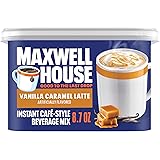Making a classic cappuccino at home, traditionally thought to require an expensive espresso machine, is entirely possible even with just a simple French press. As demonstrated in the video above by coffee consultant Joey Papa, a delicious French press cappuccino can be crafted right in your kitchen.
This method focuses on creating a concentrated coffee brew that mimics espresso and then perfectly frothing milk, all without specialized equipment. If a rich, foamy cappuccino is desired but an espresso maker is not owned, this guide will help in mastering the technique.
Understanding the French Press for Cappuccinos
The French press, a humble yet effective brewing device, is ideal for those who appreciate robust coffee flavors. It originated with the French, and its design is quite straightforward. Essentially, coffee grounds and hot water are steeped together in a carafe, and then a plunger with an attached filter is pressed down, separating the grounds from the brewed coffee.
While often used for coarser grinds and longer steeping times to produce a full-bodied, immersive cup, the French press’s adaptability allows it to be leveraged for a more intense brew. For a French press cappuccino, the goal is to produce a highly concentrated coffee, similar in strength and body to traditional espresso, which forms the core of the drink.
Why a French Press Works as an Espresso Alternative
An espresso machine uses high pressure to force hot water through finely ground coffee, resulting in a concentrated shot. While a French press cannot replicate the pressure aspect, it can achieve a high level of concentration and extraction. This is done by using a higher coffee-to-water ratio and a finer grind size than typically used for standard French press brewing.
The increased surface area of finely ground coffee, combined with a sufficient steeping time, allows for a greater extraction of flavor compounds. This intensive extraction is crucial when attempting to make a cappuccino using a French press, ensuring that the coffee component is strong enough to stand up to the milk and foam.
Gathering Your Ingredients and Equipment
Before beginning the brewing process, it is important that all necessary items are prepared. Having everything ready simplifies the steps and ensures a smoother coffee-making experience.
Essential Equipment:
- French Press: A standard-sized French press will work perfectly.
- Small Pot: For heating and partially frothing milk on the stove.
- Coffee Mug: The vessel for your finished cappuccino.
- Timer: Essential for precise steeping.
- Measuring Spoons: For accurate coffee dosage.
- Optional: A milk frother (handheld or electric) if not using the stovetop method.
Key Ingredients:
- Finely Ground Coffee: This is critical. Look for coffee labeled “espresso grind” or “fine grind” at your grocery store or coffee shop. The finer the grind, the more surface area is exposed to the hot water, leading to a richer, more concentrated extraction. A medium-dark or dark roast is often preferred for cappuccinos as its robust flavor profile complements milk well.
- Milk: Any type of milk can be used, but whole milk often produces the best foam due to its fat content. Dairy-free alternatives like oat milk or almond milk can also be frothed, though results may vary.
- Water: Filtered water is always recommended for superior coffee flavor.
- Optional: Sugar or your favorite flavoring syrups.
The Secret to Concentrated Coffee: A French Press Espresso Substitute
The core of a great French press cappuccino lies in creating a powerful coffee base. This is achieved by adjusting the typical French press brewing parameters to maximize concentration and flavor.
Steps for Brewing Concentrated Coffee:
- **Measure Your Coffee Grounds:** It is recommended to use double the amount of coffee typically used for a standard French press brew. For example, if a 4-cup French press is being used, approximately four tablespoons of finely ground coffee should be measured. This high coffee-to-water ratio is fundamental for achieving a strong, espresso-like concentrate.
- **Add Coffee to French Press:** The finely ground coffee should be placed directly into the carafe of the French press. It is important that the grind is consistent and fine to allow for optimal extraction during the shorter steep time.
- **Add Hot Water (Halfway):** Instead of filling the French press completely, hot water should be poured only halfway up the carafe. This reduction in water volume, combined with the increased coffee grounds, further intensifies the brew. The water should be hot, ideally between 195°F and 205°F (90°C and 96°C), just off the boil.
- **Steep for Four Minutes:** Once the hot water is added, the mixture should be allowed to steep for exactly four minutes. Setting a timer is crucial, as this precise steeping time allows the water to fully extract the intense flavors and body from the finely ground coffee without over-extracting bitterness.
- **Plunge Slowly:** After four minutes, the plunger should be slowly and steadily pressed down to the bottom of the French press. This action effectively separates the coffee grounds from the concentrated coffee, yielding what will serve as the espresso component of the cappuccino.
Frothing Milk for Your French Press Cappuccino
The distinct layers of a cappuccino—concentrated coffee, hot milk, and a generous cap of airy foam—are what define it. Creating the perfect milk foam is an essential step, even without a steam wand.
Methods for Frothing Milk:
- **Stovetop Method (as seen in video):**
- **Heat the Milk:** Milk should be poured into a small pot and heated on the stove over medium heat. It is critical to watch it closely and remove it from the heat just before it boils. Small bubbles will begin to form around the edges, and steam will rise. Boiling the milk can alter its taste and texture, making it less ideal for frothing.
- **Whisk or Shake:** Once heated, the hot milk can be gently whisked vigorously to incorporate air and create foam. Alternatively, it can be poured into a jar with a tight-fitting lid, shaken vigorously for 30-60 seconds, and then poured back into the pot or directly into your mug. This action builds texture and creates that desired foamy top layer.
- **Using a Handheld Frother:**
- **Heat and Froth:** Milk can be heated in a pot or microwave until hot (again, not boiling). A handheld battery-operated frother is then submerged into the hot milk and activated. Moving the frother up and down near the surface of the milk will quickly incorporate air, creating a light, consistent foam.
The goal is to achieve a good balance of hot milk and a substantial layer of foam. It is the foam that truly distinguishes a cappuccino, providing that luxurious, airy texture.
Assembling Your Homemade French Press Cappuccino
With the concentrated coffee brewed and the milk frothed, the final step is to combine these elements into a delightful French press cappuccino.
Putting It All Together:
- **Pour the Coffee Base:** Approximately two to three ounces of the freshly brewed, concentrated coffee should be poured into the bottom of your coffee mug. This provides the strong flavor foundation for the drink.
- **Add Hot Milk:** Next, the hot, unfoamed milk should be carefully poured over the concentrated coffee. A spoon can be used to hold back the foam initially, allowing the liquid milk to combine with the coffee.
- **Spoon on the Foam:** Finally, the remaining rich, airy foam should be spooned generously on top of the drink. This thick layer of foam is what gives the cappuccino its signature appeal and delightful mouthfeel.
- **Personalize (Optional):** At this stage, sugar, sweeteners, or flavorings like vanilla or caramel syrup can be added to taste. A sprinkle of cocoa powder or cinnamon on top can also elevate the experience.
Serving the French press cappuccino immediately ensures the best temperature and foam integrity. The satisfaction of crafting such a sophisticated drink with basic home equipment is truly rewarding.
Tips for Perfecting Your French Press Cappuccino
Even with simple tools, small adjustments can make a significant difference in the quality of your homemade French press cappuccino. Consistently delicious results can be achieved by paying attention to a few details.
Refinement Pointers:
- **Experiment with Grind Size:** While “finely ground” is key, some experimentation might be needed to find the optimal fineness for your specific coffee and French press. Too fine, and plunging might be difficult; too coarse, and the concentration may not be sufficient.
- **Temperature Control:** Ensuring the water for brewing is at the right temperature (just off boil, around 200°F) prevents burning the coffee or under-extracting it. Similarly, heating milk without boiling is crucial for optimal frothing.
- **Freshness Matters:** Using freshly roasted and freshly ground coffee will always yield a superior flavor. Buying whole beans and grinding them just before brewing can significantly improve your French press cappuccino.
- **Milk Choice:** Different milks froth differently. Whole milk generally creates the most stable and voluminous foam due to its fat content. However, specific oat milks designed for baristas can also produce excellent results for those avoiding dairy.
- **Cleaning Your French Press:** Regularly and thoroughly cleaning your French press ensures no old coffee residues affect the taste of your fresh brew. Disassemble the plunger and wash all parts.
By following these guidelines and the expert advice from the video, a delightful and authentic cappuccino can consistently be made using a French press. This method proves that professional-tasting coffee beverages are not exclusive to coffee shops or expensive machines.







